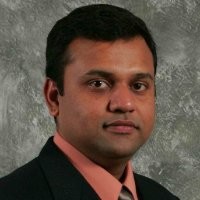Large capital investment has been completed or committed in traditional electricity generation modes using fossil fuels, nuclear power generation comes with its own challenges on safety and technology, leave apart the availability of nuclear fuel. With the advancements in technology and business interest in sustainable energy, the focus on Solar Energy has increased manifold in the past few years. This has led to cost of solar power generation falling dramatically as well as installation, maintenance and monitoring cost and effort.
Solar generation, apart from large state owned facilities is sporadic and unstructured. Significant changes in policy is needed to improve adoption at the ground level and the current governmental scenario seems to support the generation and usage of solar power.
Technology, in the form of IoT (an others) comes to help in accelerating this change. What is important for electricity value chain?
Setup, generation, transmission, distribution and supply of raw material – fossil fuel and water. With the current large scale setup, monitoring is relatively easy and centralized. SCADA systems have been in place for decades now. But there is one important element, the flow in one way i.e. Generate > Transmit > Distribute > Consume > Pay and this model is prone to losses . Often generation and consumptions are hundreds of miles apart. With Solar, we disrupt this value chain, Generation can now happen at site, Consumer can ‘sell’ surplus power. This will disrupt the economics of current fossil fuel base setup, base load calculations , IRR, Break even timings and therefore financial viability will be disrupted. With the application of IoTs we can monitor this disruption in real time. While, we do not stop the disruption, but because we can measure it, we can manage it.
Plan is to let the existing setup (fossil fuel dominated) be financially viable. Expansion demand is catered to by adding solar capacity. Onsite equipment measures electricity generated, consumed and fed back into the grid. Aggregated over a large area and over a period of time gives us insights into the consumption and submission patterns, which in turn helps establish/modify existing generation capacity. Equipment also helps us identify device consumption patterns. Discussion Case: SustainCo Business we want to setup: IoT enabled Solar generation capacity Area to be covered: Our village in Distt Mathura, 500 acres Problem Definition: Ideating and articulating what are we trying to do and why? Personas: Who will be impacted and how? Journey: What will each person go though Prepare a mini business case on the setup This is just one application in one scenario, every time we build a scenario, if we take it through this process then the results are dramatic, democratic and more importantly implementable.
As engineers we are trained to think in terms of design, in the business world, we apply the same approach to business problems too. About Trainer Sameer is a management consultant with close to two decades of professional life in sales, marketing, consulting and corporate roles. He has worked across geographies in US, India, Middle East and Asia Pacific. His focus area is ‘Organizational Transformations’ , that are triggered by growth,
compliance, M&A and technology interventions. Being associated with a leading global consulting firm, he is trained to be ’ahead of the curve’ in terms of skills and therefore has gained significant experience in new age skills of
Design Thinking and Analytics Driven Strategy formulation and Organizational Science applications He also has extensive experience in consulting sales, business performance management and People related topics and has led the Organization Change practice of over 75 consultants for his employer. An engineer by his first degree, he has worked with Technology companies throughout his career and involved himself with clients that are in the technical domain like Mining, Oil & Gas and Manufactiring.

Sameer MathurSenior Principal at Accenture Strategy